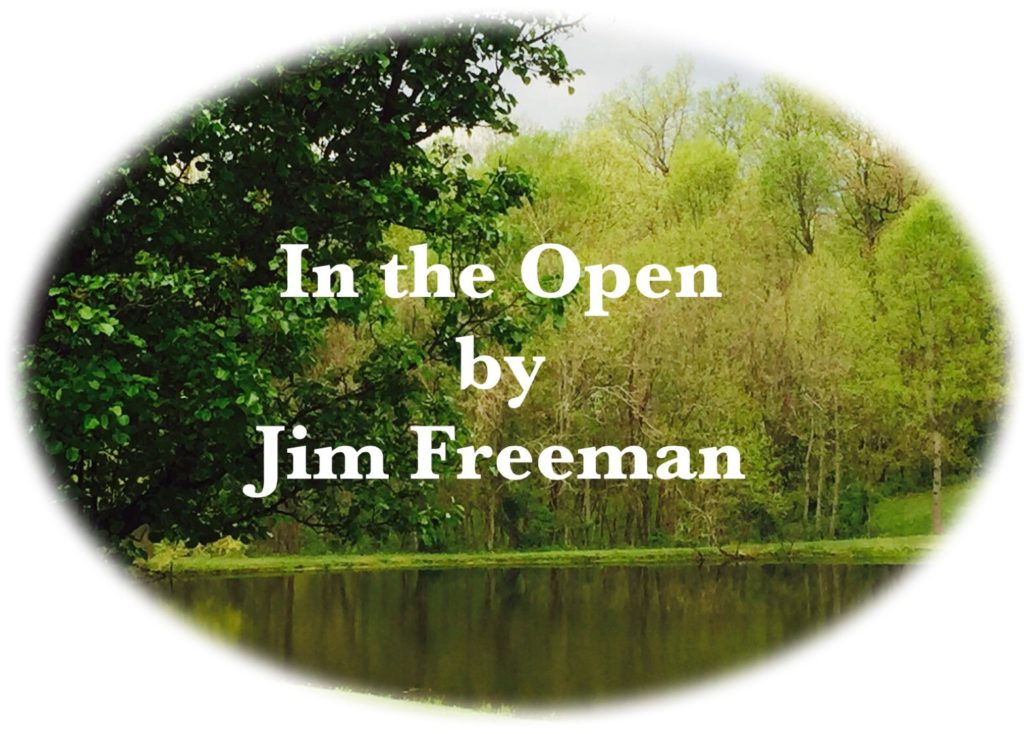Enjoy this fleeting season while it lasts


Enjoy this fleeting season while it lasts
It’s spring!
Astronomically speaking, spring is that time between the vernal equinox and the summer solstice, the time when days start to get longer than the nights, until the longest day of the year, which marks the beginning of summer. That definition, however, doesn’t even begin to do it justice; it is like describing a color by explaining the visible spectrum of electromagnetic radiation in terms of wavelength and frequency. It doesn’t tell you how it actually feels.
No, to really experience spring, you must get down on its level, using all your senses to grasp its fullness. I’m not new to the outdoors, but I am like a deaf and blind man in the woods; I can hear the sounds around me (well, some of them) and see what is going on, but I don’t necessarily understand it all. For that I would require an armload of field guides.
For instance, I can hear the calling of a particular bird, or see a flash of color as it darts about the forest canopy, but I might not recognize its call or distinct plumage – some are very distinctive such as the gobbling of a male wild turkey, or the drumming of a ruffed grouse (rarely heard these days). Incidentally, if you could interpret the bird sounds around you, you would find most of them aren’t singing sweetly at all, rather they are saying things like “Hey baby,” “Come check me out,” or “Go away, this spot is taken.” You might even blush. Likewise, many of the insects and amphibians are doing their best version of a smooth pick-up line, calling out to prospective mates or securing choice territory.
Signs of the resurrection of life are all around you. Some (like buds, leaves and flowers) are more obvious than others, some are more discreet, and you may have to know what you are looking for. Our sawtooth oak desperately holds on to last year’s leaves, but heralds spring by finally shedding them.
Most of us are familiar with yards full of robins (that are after the earthworms that are closer to the surface due to warming soil temperatures), but other birds start to arrive as well. The barn swallows will be returning soon, and hummingbirds of course, and bluebirds will be conspicuous in larger numbers. For the dark-eyed junco, southern Ohio is its version of Florida; as spring and summer approach, this bird will fly north to the boreal forests of Canada and even to the arctic.
The forsythia is in full bloom right now and will be followed shortly by the redbud and then the dogwood. Life returns to the creeks as well, the riffles are alive with spawning fish (at least in healthy streams), and the shaded pools and root wads are once again full of sunfish, minnows and other small fish. Lampreys and suckers head upstream to spawn (the timing around here usually coincides with the dogwoods blooming), and aquatic macroinvertebrates (i.e. bugs) are on the move. Tadpoles and amphibians are doing their things too.
The forest floor springs to life. In the span of a few short weeks, the woods will go from brown and gray to lush green, and it is during the brief time from the advent of warmer weather to the full canopy that many of the wildflowers that populate the forest floor must flower and reproduce – starting with the bloodroot, then trilliums and others, and the May apples which eventually cover much of the forest floor under their large, umbrella-like leaves.
Turkey hunters and anglers are well-positioned to observe these changes first-hand.
It’s no surprise that cultures in temperate areas around the world have long associated spring with rebirth, reproduction, and resurrection, symbolized by bunnies, chicks, and ducklings. The fields and woods, and sometimes back yards, are full of baby animals, which wise humans will hopefully leave alone.
Take a little time to savor this fleeting season; love every moment of it as if it were your last. Drink it in. Get OUT there! There is no guarantee that you’ll be around to see it again, and it will be finished before you know it.
By Memorial Day this annual pageant we call spring is pretty much wrapped up, followed by allergies, heat, humidity, sunburns and endless lawn mowing, until once again the seasons turn, and this miraculous show of rest and regeneration enters another phase.
Jim Freeman is the wildlife specialist for the Meigs Soil and Water Conservation District. He can be contacted weekdays at 740-992-4282 or at [email protected]






